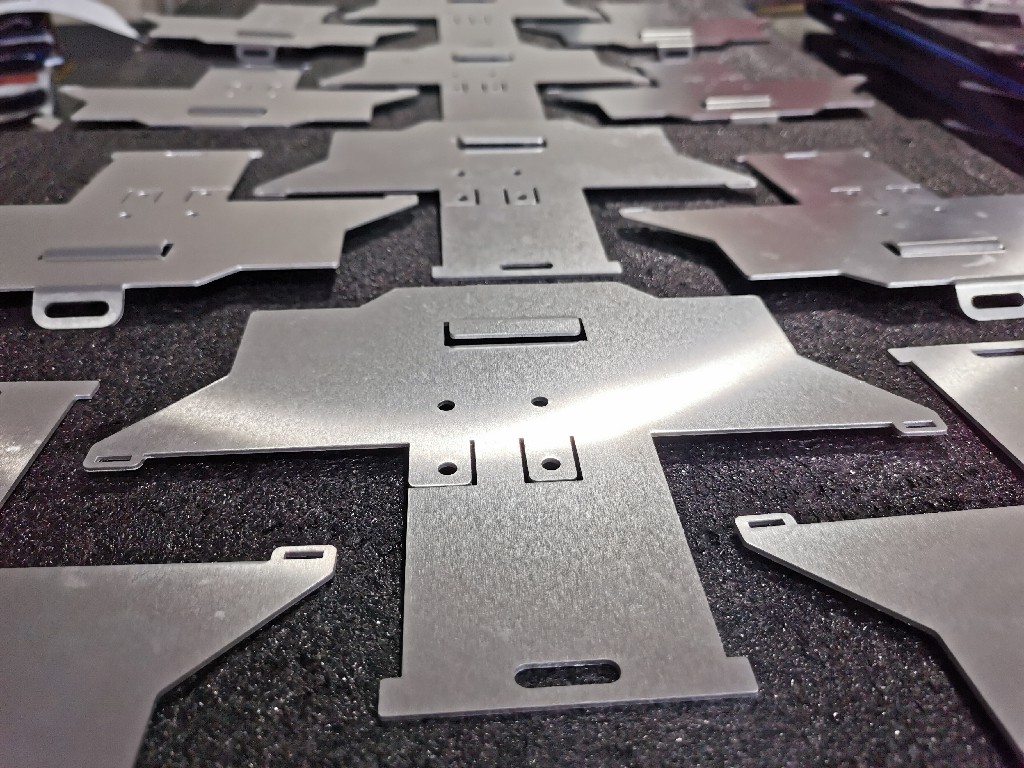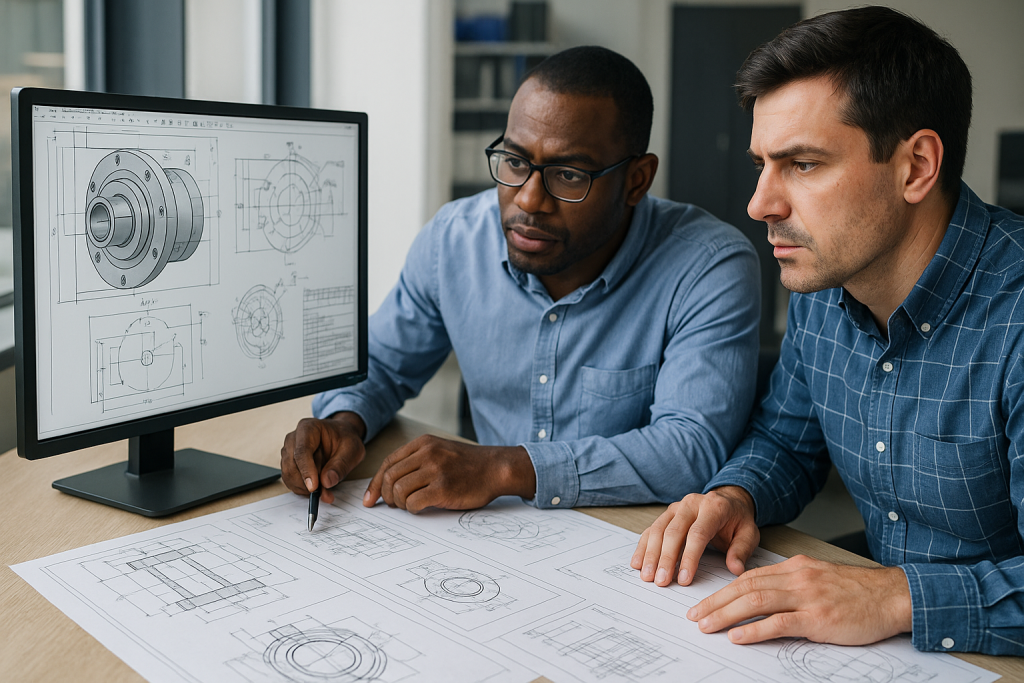
Selecting the right material is one of the most crucial decisions in any sheet metal fabrication project. The material you choose affects the strength, weight, corrosion resistance, aesthetics, cost, and manufacturability of the final product. With so many options available, understanding the properties of each metal—and how they fit your project requirements—is essential.
Whether you’re prototyping or moving into production, working with an experienced partner like Boona Prototypes ensures optimal results from design to delivery.
I. Why Material Selection Matters
Choosing the wrong material can lead to issues in bending, welding, finishing, or long-term durability. Selecting the right material early in the design process helps to:
-
Ensure performance under mechanical stress
-
Minimize production waste
-
Lower total manufacturing costs
-
Improve surface finish and aesthetics
-
Match specific environmental or regulatory needs
II. Key Factors in Selecting Sheet Metal Materials
| Factor | Description |
|---|---|
| Mechanical Properties | Strength, ductility, fatigue resistance, hardness |
| Corrosion Resistance | Ability to resist rust, oxidation, chemicals |
| Weight | Important for transportation, aerospace, and mobility applications |
| Cost | Includes raw material cost, ease of fabrication, finishing, waste |
| Fabrication Compatibility | How easily the material can be bent, cut, or welded |
| Surface Finish Needs | Based on whether the product is visible, painted, or anodized |
III. Comparison of Common Sheet Metal Materials
| Material | Strength | Corrosion Resistance | Weight | Cost | Notes |
|---|---|---|---|---|---|
| Cold-Rolled Steel (CRS) | High | Low (needs coating) | Medium | Low | Easy to form, cost-effective |
| Galvanized Steel | High | Medium-High | Medium | Medium | Zinc-coated for corrosion resistance |
| Stainless Steel (304/316) | Very High | Very High | High | High | Ideal for food, medical, marine |
| Aluminium 5052 | Medium | High | Low | Medium | Excellent corrosion resistance and formability |
| Aluminium 6061 | High | Medium | Low | Medium | High strength, good machining, anodizable |
| Copper Alloys | Low-Medium | Medium | Medium-High | High | Excellent conductivity, aesthetic value |
IV. Material Selection Based on Use Case
| Use Case | Recommended Materials |
|---|---|
| Outdoor/Marine | 316 Stainless, Aluminium 5052 |
| Aerospace/Lightweight | Aluminium 6061, 7075 |
| Visible Consumer Products | Anodized Aluminium, Brushed Stainless |
| Structural Strength | CRS, Galvanized Steel, 6061 Aluminium |
| High Electrical Conductivity | Copper, Brass |
V. Fabrication Compatibility
Each material responds differently to manufacturing processes:
-
CRS and galvanized steels: Ideal for stamping and welding
-
Stainless steel: Requires precise tooling but offers premium finish
-
Aluminium 5052: Excellent for bending and corrosion resistance
-
Aluminium 6061: Stronger but less formable than 5052
-
Copper: Soft and conductive but scratches easily
For a detailed breakdown of how fabrication methods vary by material, visit the Boona Prototypes Sheet Metal Fabrication Services page.
VI. Cost Considerations
| Material | Approx. Price per Kg (USD) | Machining Difficulty | Surface Finish Options |
|---|---|---|---|
| CRS | $0.90 – $1.20 | Easy | Powder coat, paint |
| Stainless Steel | $2.00 – $3.50 | Medium | Polished, brushed |
| Aluminium 5052 | $2.50 – $3.00 | Easy | Anodizing, powder |
| Aluminium 6061 | $2.20 – $2.80 | Medium | Anodizing, machining |
| Copper | $6.00 – $9.00 | Medium | Plating, polishing |
Note: Prices are indicative and vary by market region and volume.
VII. Best Practices for Material Selection
-
Define Functional Requirements – What loads, environments, or aesthetics are involved?
-
Narrow Down Candidates – Based on corrosion resistance, cost, and formability
-
Consult with Your Fabricator – They’ll know what’s available and easy to work with
-
Prototype if Needed – Test performance in real-world or simulated conditions
-
Consider Finish Early – Not all materials take the same coatings or polishes
Conclusion
The material you choose sets the foundation for your entire fabrication project. Balancing mechanical properties, corrosion resistance, cost, and process compatibility ensures success from prototype to production.
Boona Prototypes offers expert guidance and precision sheet metal fabrication services tailored to your material and performance needs. Whether you’re working with aluminium, stainless, or steel, we help you bring your concept to life—efficiently and affordably.
👉 Learn more at Boona Prototypes – Sheet Metal Fabrication
FAQs
Q1: What is the best material for sheet metal fabrication?
The best material depends on your application. For general strength and low cost, cold-rolled steel (CRS) is ideal. For corrosion resistance, use stainless steel or aluminium 5052. For lightweight applications, aluminium 6061 is preferred.
Q2: What sheet metal is most corrosion-resistant?
Stainless steel 316 offers the highest corrosion resistance, especially in marine or chemical environments. Aluminium 5052 is also highly resistant to corrosion and suitable for outdoor use.
Q3: What is the difference between aluminium 5052 and 6061 in sheet metal fabrication?
5052 aluminium is more formable and corrosion-resistant, making it great for bent or curved parts. 6061 aluminium is stronger and more machinable but less flexible, best for structural or machined components.
Q4: Which sheet metal material is cheapest?
Cold-rolled steel (CRS) is generally the most affordable option. However, it may require coating (e.g., painting or galvanizing) to resist corrosion, which adds to overall cost.
Q5: What factors should I consider when selecting sheet metal material?
Consider:
-
Load-bearing and structural strength
-
Corrosion resistance
-
Weight and mobility requirements
-
Fabrication methods (welding, bending, machining)
-
Surface finish needs
-
Budget and raw material availability
Q6: Can I use copper for sheet metal parts?
Yes, copper is used for parts requiring excellent electrical or thermal conductivity, such as busbars or decorative panels. It’s more expensive and softer than steel or aluminium.
Q7: Is galvanized steel better than stainless steel?
It depends. Galvanized steel is more affordable and provides basic corrosion protection through a zinc coating. Stainless steel, though more expensive, offers better long-term corrosion resistance and durability without coating.
Q8: What material is best for laser cutting and bending?
Aluminium 5052 and cold-rolled steel are excellent for laser cutting and bending due to their formability and clean edge retention. Stainless steel also performs well but may require higher power settings.
Q9: How does material thickness affect selection?
Thicker materials increase strength but reduce formability and may require more powerful fabrication tools. Always match material thickness to your design’s strength, weight, and tolerance requirements.
Q10: Can Boona Prototypes help me choose the right material?
Absolutely. Boona Prototypes provides expert consultation on material selection based on your application, environment, budget, and production method. They also offer prototyping and full-service fabrication.



